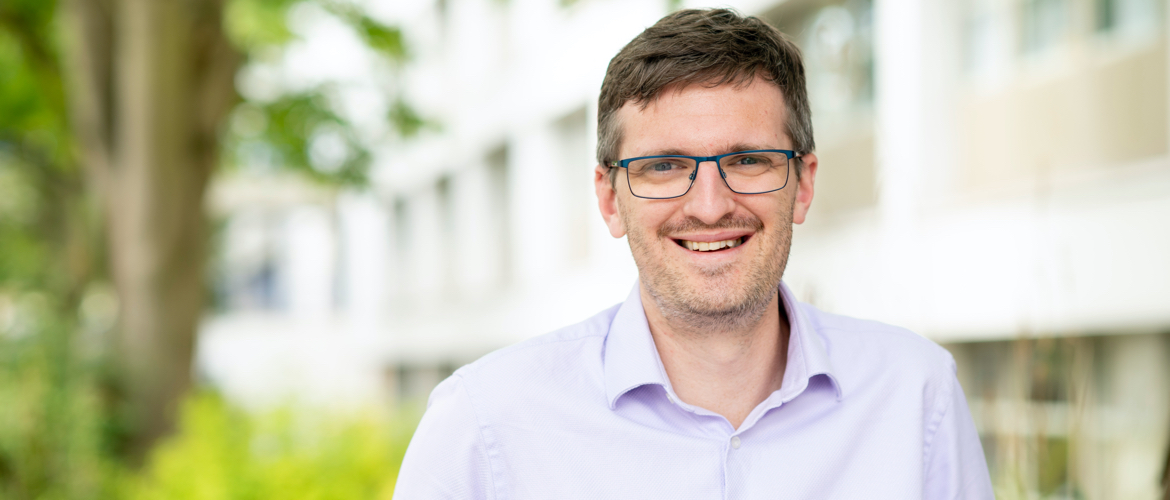Professor Peter Gammon

Prof. Peter Gammon
Professor of Power Electronic Devices
Electrical Power and Control Research Cluster Lead
MEng, PhD, SMIEEE, MIET, SFHEA
+44 (0)24 765 23154
Biography
Professor Peter Gammon is a leading researcher in Silicon Carbide (SiC) power electronic devices at the University of Warwick’s School of Engineering, where he has been a faculty member since 2012. His research focuses on developing and commercialising the next generation of SiC power devices for applications in electric vehicles, satellites, renewable energy, and the grid.
Professor Gammon is the University of Warwick’s lead within the REWIRE Innovation and Knowledge Centre (EP/Z531091/1), which aims to commercialise wide-bandgap semiconductor devices for power electronics in collaboration with over 30 industrial partners. A former Royal Academy of Engineering Research Fellow, he has led several major UKRI and EU-funded projects. Three major grants on radiation-hard SiC devices for space applications, including the SiCSat Project (EP/V000543/1), advanced SiC technology for use in satellites and space agency missions. The Switch Optimisation Theme (EP/R00448X/1) within the EPSRC Centre for Power Electronics developed ultra-high-voltage (10 kV+) SiC IGBT devices for grid applications.
Professor Gammon leads the Electrical Power and Control Research Cluster.
Research Interests
The market for SiC power devices was worth $2.7bn in 2023, a meteoric rise since the release of the first SiC MOSFET in 2011. This has been driven by demand from the electric vehicle, industrial machine, datacentre and renewable energy sectors. SiC’s fundamental properties include a high critical electric field, high thermal conductivity and wide bandgap compared to silicon. These properties underpin the fast switching and highly efficiency power converters, for which SiC has become known.
Despite this success, SiC has yet to reach its full potential. Silicon-based devices ranging from voltage ratings of 10V to nearly 10kV dominate most power electronic markets. By contrast, the breakthrough of SiC devices in the 600-1200V window is narrow and dominated by the fluctuating fortunes of the electric vehicle market.
The research conducted within Prof. Gammon’s research group split into two categories:
•Advancing current SiC MOSFET Technology: Research into SiC device design (TCAD design of trench architectures) and SiC device processing (including the oxide interface), seeks to tackle present issues of current commercial devices, minimising costs by tackling poor device yield and improving efficiency and reliability of SiC MOSFETs.
•Exploring New Applications for SiC: Developing SiC devices for applications outside the current commercial market. This includes device architectures that can withstand heavy ion radiation, enabling SiC to be launched into space on satellites and space agency missions. The group also specialise in developing high voltage device architectures, superjunction MOSFET designs and bipolar devices (thyristors and IGBTs) for grid applications.
Our research group prides itself in its close relationship to industry. Collaborations across the entire SiC supply chain—from chip manufacturers and materials companies to equipment suppliers and automotive OEMs—ensure cutting-edge SiC technologies transition from the lab to real-world applications.
Projects and Grants
| Project title |
Award |
Year | Funder / Number |
| UP-SiC: Unlocking the Future Potential of SiC in Power Electronics |
£2.5m |
2024-2027 | EPSRC |
| REWIRE IKC Transforming Net Zero with Ultrawide Bandgap Semiconductor Device Technology Innovation and Knowledge Centre |
£11m |
2024-2029 |
UKRI |
| AdvanSiC: Advances in Cost-Effective HV SiC Power Devices for Europe’s Medium Voltage Grids |
£988k |
2022-2025 |
Horizon Europe 51611 |
| WELD - Warwick ELectrification Deployment |
£1m |
2022-2024 |
DER/ Innovate UK |
| SiCSat - Silicon Carbide Power Conversion for Telecommunications Satellite Applications. |
£746k |
2024-2024 |
EPSRC EP/V000543/1 |
| EPSRC Centre for Power Electronics: Underpinning Power Electronics 2017-2020: Switch Optimisation Theme |
£1.2m |
2018-2021 |
EPSRC EP/R00448X/1 |
| TRASiCA: High current 3.3kV SiC Schottky diodes for hybrid modules in traction applications |
£500k |
2017-2018 |
Innovate UK 102897 |
| SaSHa: Si on SiC for the Harsh Environment of Space |
€1m |
2016-2018 |
Horizon 2020 687361 |
| Silicon-Silicon Carbide (Si/SiC) Power Devices for high temperature, hostile environment applications |
£125k |
2015-2018 |
EPSRC EP/N00647X/1 |
| NICHE: Royal Academy of Engineering Fellowship: Novel Interlayer Cooling for the Harsh Environment |
£500k |
2012-2017 |
Royal Academy of Engineering |
Publications and other content.
- Peter's full and up-to-date list of publications are available on Google Scholar.
- A 2019 tutorial on SiC Power Devices that Peter gave at a EPSRC Centre for Power Electronics event is free to download here.
SiC Facilities
The PEATER Group is one of the leading research groups in the world focused on SiC device development, with a suite of equipment and facilities to match. This includes:
- The Science City Cleanroom, a 150 m2 ISO class 6 cleanroom including high temperature oxidation and annealling furnaces, photolithography, etching and wet processing, metal deposition, and atomic layer deposition.
- The UK’s only industrial SiC CVD reactor in an ISO class 4 cleanroom, used for the epitaxial growth of SiC.
-
Characterisation Facilities, including a Keysight B1505A power device analyser and a SemiProbe semi-automated wafer prober for device characterisation up to 10 kV, 100 A and 300 °C.
-
An ISO class-8 packaging cleanroom.
Office
A302
Write to
School of Engineering, University of Warwick, Coventry, CV4 7AL
The Research Team
REWIRE IKC Project
Nikos Iosifidis (Device Fabrication)
PhD Students:
Niamh Arnold (Neutron Testing of SiC Power Devices)
Viren Kotagama (SiC Rad-hard Devices)
Xinkai Tian (SiC Interfaces, with Dynex Semiconductor)
Zhaoxue Yuan (SiC Device Modelling)
Bailing Zhou (SiC SJ Devices, with Bosch)
